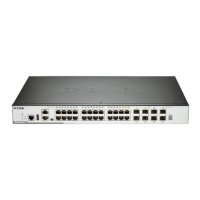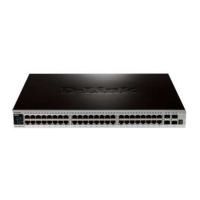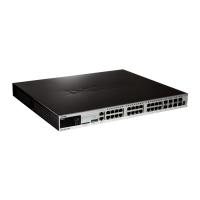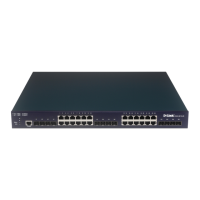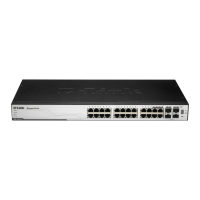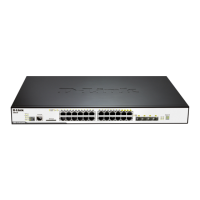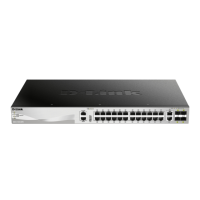DGS-3630 Series Layer 3 Stackable Managed Switch Web UI Reference Guide
162
Parameter Description
BPDU Forward
Select to enable or disable BPDU forwarding. If enabled, the received STP BPDU
will be forwarded to all VLAN member ports in the untagged form. By default, this
option is Disabled.
Priority
Select the priority value here. Options to choose from are 0 to 240. By default this
option is 0. A lower value has higher priority.
Hello Time
Enter the hello time value here. This value must be between 1 and 2 seconds.
This value specifies the interval that a designated port will wait between the
periodic transmissions of each configuration message.
Loop Guard
Select to enable or disable the Loop Guard feature on the specified port(s) here.
The STP Loop Guard feature provides additional protection against Layer 2
forwarding loops (STP loops). An STP loop is created when an STP blocking port
in a redundant topology erroneously transitions to the Forwarding state. This
usually happens because one of the ports in a physically redundant topology (not
necessarily the STP blocking port) no longer receives STP BPDUs. In its
operation, STP relies on continuous reception or transmission of BPDUs based
on the port role. The designated port transmits BPDUs, and the non-designated
port receives BPDUs.
When one of the ports in a physically redundant topology no longer receives
BPDUs, the STP considers the topology to be loop free. Eventually, an alternate
port that was previously a Blocking or Backup port becomes Designated and
moves to a Forwarding state. This situation creates a loop.
Click the Apply button to accept the changes made.
MST Configuration Identification
This window is used to display and configure the MST configuration identification settings. These settings will uniquely
identify an MSTI configured on the Switch. The Switch initially possesses one Common Internal Spanning Tree (CIST)
of which the user may modify the parameters for but cannot change or delete the MSTI ID.
To view the following window, click L2 Features > STP > MST Configuration Identification, as shown below:
Figure 5-52 MST Configuration Identification Window
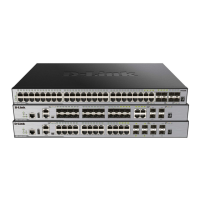
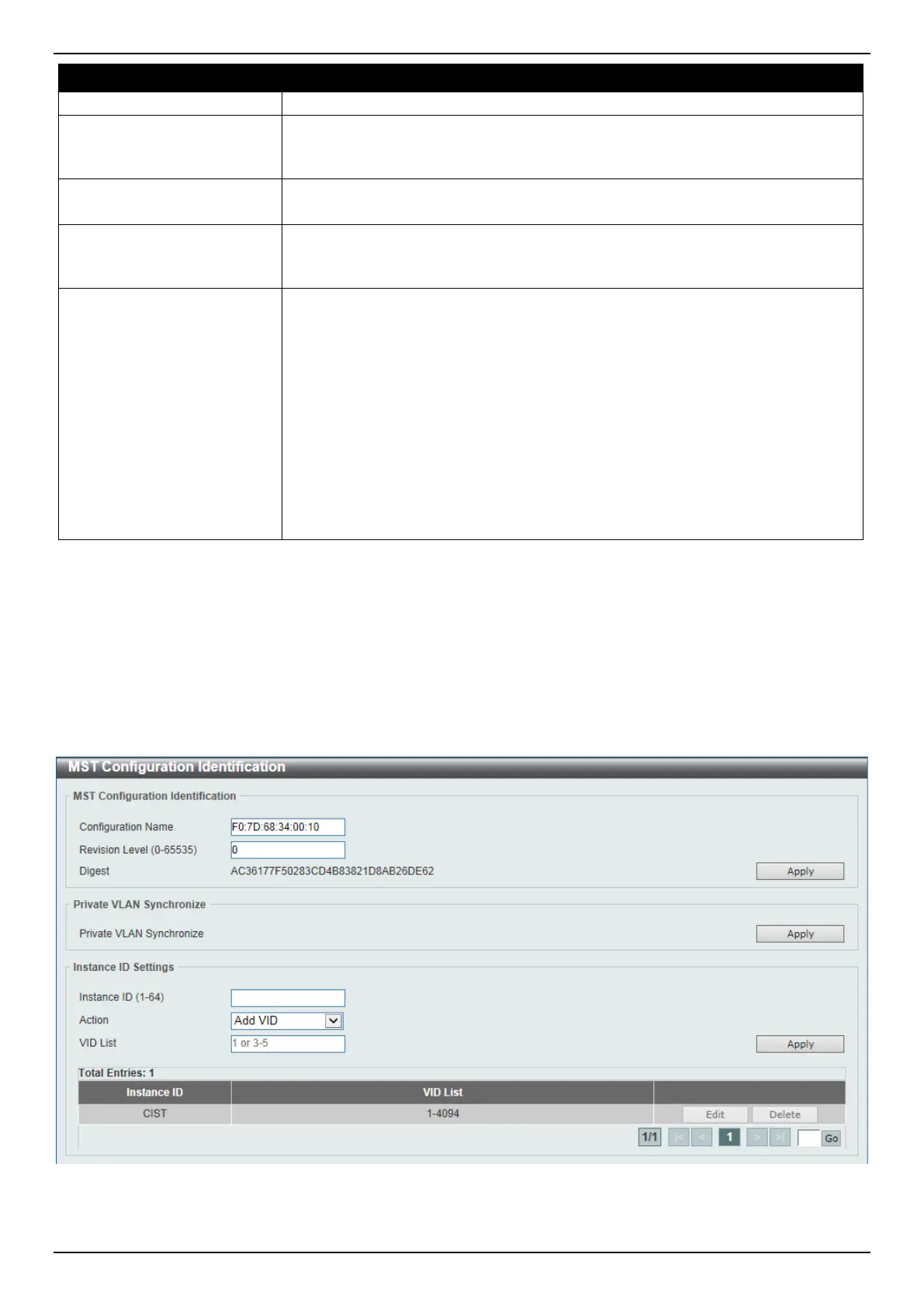